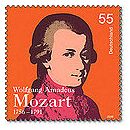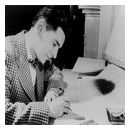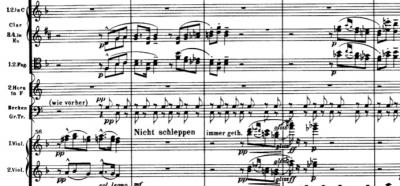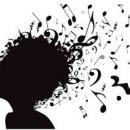Pronto me di cuenta de que no era tan fácil  Tamloco difícil
Tamloco difícil 
"Adivina Musicanza 4"

OFERTAS Ver todas
-
-50%NI Komplete 15 Collector's Edition
-
-29%Behringer X-Touch Compact
-
-7%Modal Argon8 (B-Stock)










Ya te digo yo que sí...
Heitor Villa-Lobos (1887 - 1959)
Concerto for Guitar and Orchestra
One could scarcely imagine a sharper contrast than that between the conservative (no 'ologies' or 'isms') and economical Castelnuovo-Tedesco and the colourful extrovert and largely self-educated Heitor Villa-Lobos, the blender of Brazilian folk elements with those of European art music. Of the three composers in this recording he was the only one who had some skill with the guitar, for which he had written a few small pieces before his meeting with Segovia in Paris in the 1920s. Though Villa-Lobos left comparatively few works for the guitar, the Twelve Studies (1929), Five Preludes (1939-40), the Suite (1908-1912) and the Guitar Concerto (1951) have become world-wide standard repertory for the instrument. The Concerto was written for Segovia, who premiered it in February 1956. He did so only after Villa-Lobos had added the cadenza - there was one in the Harp Concerto, written for Zabaleta, so why not one for the guitar? - and the original title of "Fantasia concertante" was changed. Villa-Lobos approved of the use of a microphone by the soloist, "in order that he may play with greater freedom"; Segovia never agreed with this, nor has Rodrigo ever done so - claiming it to be unnecessary in the performance of his works.
The orchestra briefly introduces the first movement before the guitar enters with the energetic, wide-ranging first subject. The second, somewhat slower, recalls (but does not quote from) the folksongs of north-east Brazil; here the guitar deploys chords and harmonics. Again after a short introduction (flute and clarinet) the guitar begins with the main theme of the second movement, a melody of 'popular' character in 3/4 time, which returns in varied form after the expressive central section (6/8 time) and before the coda.
Here the cadenza is interposed, a lengthy and virtuosic mulling-over of the Concerto's thematic material. The Finale has several time-changes (3/4, 2/4, 6/4 etc.), a variety of thematic material and a great deal of syncopation. The guitar is partnered by other solo instruments (clarinet, oboe, bassoon, viola and horn) in displays of contrasting tone-colours, and, once having begun, the soloist hardly pauses for breath before the end of the stimulating kaleidoscope.
This recording brings together three of the most important guitar concertos written in this century, by composers of three different nationalities -and in three very different styles.
Heitor Villa-Lobos (1887 - 1959)
Concerto for Guitar and Orchestra
One could scarcely imagine a sharper contrast than that between the conservative (no 'ologies' or 'isms') and economical Castelnuovo-Tedesco and the colourful extrovert and largely self-educated Heitor Villa-Lobos, the blender of Brazilian folk elements with those of European art music. Of the three composers in this recording he was the only one who had some skill with the guitar, for which he had written a few small pieces before his meeting with Segovia in Paris in the 1920s. Though Villa-Lobos left comparatively few works for the guitar, the Twelve Studies (1929), Five Preludes (1939-40), the Suite (1908-1912) and the Guitar Concerto (1951) have become world-wide standard repertory for the instrument. The Concerto was written for Segovia, who premiered it in February 1956. He did so only after Villa-Lobos had added the cadenza - there was one in the Harp Concerto, written for Zabaleta, so why not one for the guitar? - and the original title of "Fantasia concertante" was changed. Villa-Lobos approved of the use of a microphone by the soloist, "in order that he may play with greater freedom"; Segovia never agreed with this, nor has Rodrigo ever done so - claiming it to be unnecessary in the performance of his works.
The orchestra briefly introduces the first movement before the guitar enters with the energetic, wide-ranging first subject. The second, somewhat slower, recalls (but does not quote from) the folksongs of north-east Brazil; here the guitar deploys chords and harmonics. Again after a short introduction (flute and clarinet) the guitar begins with the main theme of the second movement, a melody of 'popular' character in 3/4 time, which returns in varied form after the expressive central section (6/8 time) and before the coda.
Here the cadenza is interposed, a lengthy and virtuosic mulling-over of the Concerto's thematic material. The Finale has several time-changes (3/4, 2/4, 6/4 etc.), a variety of thematic material and a great deal of syncopation. The guitar is partnered by other solo instruments (clarinet, oboe, bassoon, viola and horn) in displays of contrasting tone-colours, and, once having begun, the soloist hardly pauses for breath before the end of the stimulating kaleidoscope.
This recording brings together three of the most important guitar concertos written in this century, by composers of three different nationalities -and in three very different styles.
Hilos similares
Nuevo post
Regístrate o identifícate para poder postear en este hilo

 . Y no es que ande lejos cronológicamente.
. Y no es que ande lejos cronológicamente.





